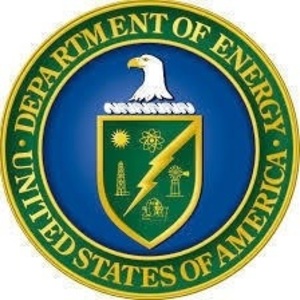DOE solicits applications for loan guarantee program




July 31, 2015
BY Erin Krueger
In early July, the U.S. Department of Energy announced it is soliciting applications for up to $4 billion in loan guarantees to support renewable energy and energy efficiency projects located in the U.S. that avoid, reduce, or sequester greenhouse gases.
According to the DOE, the renewable energy and efficient energy projects loan guarantee solicitation is intended to support technologies that are catalytic, replicable and market-ready. It targets five key technology areas of interest, including advanced grid integration and storage; drop-in biofuels; waste-to-energy; enhancement of existing facilities including micro-hydro or hydro updates to existing non-powered dams; and efficiency improvements.
Under the category of drop-in biofuels, the DOE provides several examples of eligible projects, including new biorefineries that produce gasoline, diesel fuel, and/or jet fuel; bio-crude refining facilities; and modifications to existing ethanol facilities to produce gasoline, diesel fuel and/or jet fuel. Examples of waste-to-energy projects include methane from landfills or ranches via biodigesters to heat and power; municipal solid waste to electricity; crop waste to fuel and/or energy bioproducts; and forestry waste to fuel and/or energy potentially via cofiring.
DOE DOE’s Loan Programs Office recently issued supplemental guidance on the solicitation focused on the eligibility of projects that use mixed fuels, projects that produce products, including chemicals, and how efficiency is defined. The guidance indicates a renewable energy system is considered a project that uses renewable energy to produce electricity, fuels or chemicals, or any combination thereof whereby the renewable energy inputs to the system are either the majority of total energy feedstocks or technologically necessary to the operation of the innovative technology in more than de minimus amount. Allowable renewable energy inputs include solar, wind, ocean, hydroelectric, hydrokinetic, geothermal, biomass, and renewable waste resources, such as municipal solid waste and landfill gas, crop waste, forestry waste, and biosolids.
Advertisement
Advertisement
The guidance also explains that, in general, for power generation projects to be to be considered efficient, the project must generate more power from the same amount of energy (including feedstock and process energy), as compared to current commercial processes in the U.S. For certain kinds of projects, such as waste-to-energy projects and cogeneration projects, the LPO said it may compare the efficiency of the proposed technology more specifically than by reference to U.S. generation technologies more generally.
Additional information on the solicitation, including deadlines and application requirements, is available on the LPO website.
Advertisement
Advertisement
Related Stories
The U.S. Department of Energy Bioenergy Technologies Office (BETO) announced up to $23 million in funding to support research and development (R&D) of domestic chemicals and fuels from biomass and waste resources.
The U.S. DOE has announced its intent to issue funding to support high-impact research and development (R&D) projects in two priority areas: sustainable propane and renewable chemicals and algal system cultivation and preprocessing.
Sens. Sherrod Brown, D-Ohio, and Pete Ricketts, R-Neb., in August introduced the Renewable Chemicals Act, a bill that aims to create a tax credit to support the production of biobased chemicals.
The Chemical Catalysis for Bioenergy Consortium, a consortium of the U.S. DOE’s Bioenergy Technologies Office, has launched an effort that aims to gather community input on the development of new biomass processing facilities.
USDA on March 8 celebrated the second annual National Biobased Products Day, a celebration to raise public awareness of biobased products, their benefits and their contributions to the U.S. economy and rural communities.
Upcoming Events










